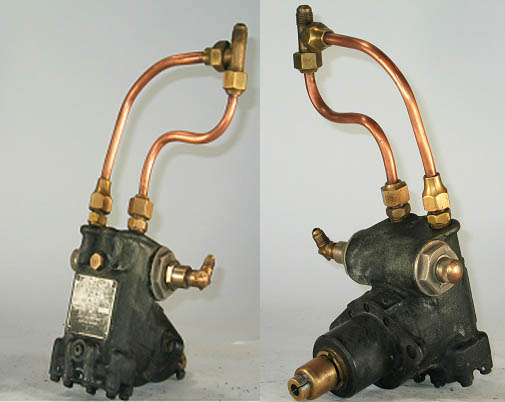Pressure Atomizing Oil Burner Equipment and Systems – Oil Pumps
Commercial, high capacity, two stage rotary, gear style pump, in cast steel body, with barrel and flange motor mount and brass drive coupling. A product of post W.W.II compacted and functionally integrated engineering. [4th wave], it stands as a marker of the wide spread application of high pressure atomizing oil burner technology to commercial and institutional uses in Canada in the last half of the 20th century, Detroit Lubricator, Circa 1958.
Technical Significance:
From the vantage point of the early 21st century, the evolution of oil fired, automatic home heating equipment would be seen as generally advancing in four broad waves, each of which would take place over a considerable period of time, each producing many variations of the genre:
1. Vaporizing, non-motorized and non-electrified, technology [see Group 11.01 artifacts, no. 11.01-1]
2. Elemental, motorized, platform mounted technology with peripheral piping and valving components [see Group 12.01, artifact no 12.01-1, and pump assembly 12.06-1]
3. Compacted motorized technology with inherent, peripheral component parts engineered into the pump assembly [see pump assembly Group 12.06, artifact, and 12.06-2]
4. Functionally integrated, motorized technology, beyond being compacted, a number of functions would be smoothly integrated into a single pump assembly, including piping and valving [see Group 12.01, artifact 12.01-2 and pump assembly 12.06-2]
This pump assembly stands as an example of a high capacity, advanced 4th wave fuel oil pump technology, compact and functionally integrated in heavy cast steel body, designed for commercial and institutional applications.
Industrial Significance:
Detroit Lubricator would be one of a relatively few engineering manufactures that would produce for both the oil heating and refrigeration sectors of the HVACR industry. Their reputation in regulating valves and electric controls for refrigeration systems was well established – see group classification 7.02 and 3.02.


